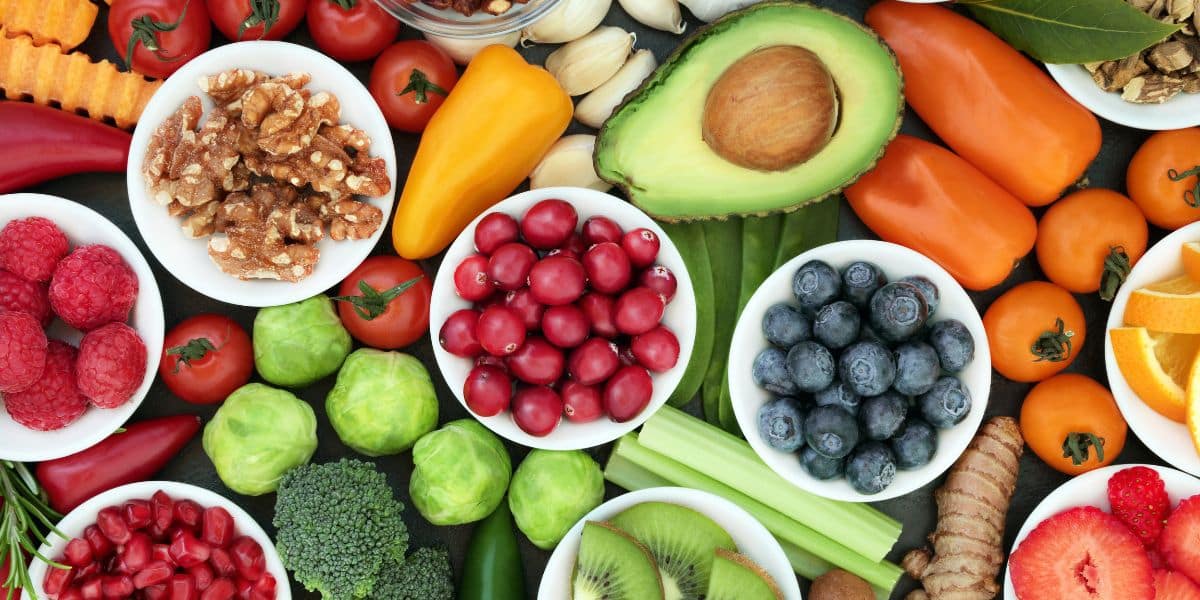Introducing solid foods to your baby is an exciting milestone in their development. It marks the beginning of a new chapter as they embark on a journey of exploring different tastes, textures, and flavors.
As your little one grows, their nutritional needs evolve, and introducing age-appropriate weaning foods becomes essential to support their growth and development.
Baby weaning is the gradual transition from a solely milk-based diet to incorporating solid foods. It is an important phase that lays the foundation for a lifetime of healthy eating habits. By introducing a variety of nutritious foods at the right time, you can provide your baby with the essential nutrients they need to thrive.
In this article, we will guide you through the world of baby weaning foods by age. We will discuss the specific needs of babies at different stages of their development and provide you with valuable insights, tips, and nutritious food suggestions to ensure a healthy start for your little one.
By understanding the importance of age-appropriate weaning foods, you can confidently navigate this exciting phase of your baby’s journey and lay the groundwork for a lifetime of nutritious eating habits. So, let’s dive into the wonderful world of baby weaning foods and explore how to nourish your baby’s growth, one stage at a time.
As an Amazon Associate, I earn from qualifying purchases. The links below may be affiliate links. Please read my disclosure policy for more information.
Understanding Baby Weaning

As your baby grows and develops, their nutritional needs change, and they become ready for the introduction of solid foods. Understanding the process of baby weaning is essential to ensure a smooth transition and promote healthy eating habits.
Signs of Readiness
Before starting the weaning process, it’s important to look for signs that indicate your baby is ready. These signs may include:
- Good head and neck control: Your baby should be able to hold their head up steadily.
- Sitting with support: Your baby should be able to sit upright with minimal support.
- Interest in food: Your baby may show curiosity in what you’re eating, reach for food, or mimic chewing motions.
Introduction of Solids
Once you observe these signs of readiness, you can begin introducing solid foods alongside breast milk or formula. Start with small amounts of pureed or mashed foods and gradually increase the variety and texture as your baby gets more comfortable.
Self-Feeding
Baby-led weaning emphasizes self-feeding and encourages babies to explore and feed themselves. Offer age-appropriate finger foods that are easy to grasp and handle.
This promotes independence, develops fine motor skills, and encourages a positive relationship with food.

Balancing Milk Feeds and Solid Foods
During the initial stages of weaning, breast milk or formula will continue to be the primary source of nutrition for your baby. As your baby becomes more accustomed to solid foods, you can gradually increase the quantity and frequency of these meals while maintaining breastfeeding or formula feeding.
Following Your Baby’s Cues
Every baby is unique and may progress through the weaning process at their own pace. Pay attention to your baby’s cues of hunger and fullness, and let them guide the timing and amount of food they consume.
Trust their instincts and avoid pressuring them to eat more than they want.
Baby Weaning Foods by Age
6-8 Months
During this stage, your baby is ready to expand their palate and explore new flavors and textures. It’s important to introduce a variety of foods to promote a well-rounded diet.
Here are some suitable weaning foods for this age group:
Fruits and Vegetables
Introduce soft-cooked vegetables, which are easy to mash and offer a range of nutrients. Carrots, sweet potatoes, peas, and broccoli florets are great choices.
These can be steamed until tender and mashed or pureed to a smooth consistency.
Soft fruits like avocado, banana, pear, and peach are also suitable options. You can offer them in mashed or pureed form for easy consumption.
As your baby progresses, you can introduce soft fruit pieces that they can hold and gnaw on to explore different textures.

Whole Grains
Begin introducing whole grains in the form of rice cereal or oatmeal porridge mixed with breast milk or formula. These cereals provide essential nutrients and can be gradually thickened to a texture that suits your baby’s preference.
As they become more accustomed to grains, you can introduce soft-cooked quinoa or couscous, which offer added protein and fiber.
Protein Sources
Introduce protein-rich foods such as well-cooked and finely mashed legumes, including lentils or chickpeas. These can be boiled until tender and mashed to a smooth consistency.
Smooth and pureed tofu is another excellent source of protein for your baby at this stage.
- Nuby Garden Fresh Mash 'N' Feed 4 Piece Baby Preparation & Feeding System Green/Orange
- One Size
- Green/Orange
Meal Plan Example
To provide a balanced meal for your 6-8-month-old, you can create a meal plan with a variety of foods:
- Breakfast: Start with rice cereal mixed with breast milk or formula for a creamy and easily digestible option. Offer mashed banana as a fruit option.
- Lunch: Introduce soft-cooked sweet potato, which can be mashed to a smooth consistency. Combine it with mashed peas for added nutrients and texture.
- Dinner: Create a dish with quinoa mixed with pureed lentils to provide protein and grains. Serve steamed broccoli florets as a vegetable option.
Remember to gradually increase the texture of the foods as your baby becomes more comfortable with chewing and swallowing. Offer small portions and pay attention to your baby’s cues of hunger and fullness.
9-11 Months
At this stage, your baby’s chewing skills are improving, and they can handle slightly more textured foods. It’s time to introduce a wider range of fruits, vegetables, whole grains, and protein sources.
Here are some suitable weaning foods for this age group:
Fruits and Vegetables
Introduce soft-cooked and mashed vegetables like carrots, green beans, squash, and peas. You can continue steaming or boiling these vegetables until tender and mashing them to a textured consistency.
Diced and steamed apples or pears are also excellent choices to provide different flavors and textures.
- 𝗔𝗹𝗹 𝗶𝗻 𝗢𝗻𝗲 𝗕𝗮𝗯𝘆 𝗙𝗼𝗼𝗱 𝗠𝗮𝗸𝗲𝗿: This baby food processor has auto, steam, blend, meat, puree, sterilize, and self-clean functions. It helps you steam and blends fruits, vegetables and meat. It can also self-sterilize. The baby food steamer is definitely one of the must-have essentials for newborns!
- 𝗤𝘂𝗶𝗰𝗸 𝗮𝗻𝗱 𝗘𝗮𝘀𝘆 𝗢𝗻𝗲 𝗦𝘁𝗲𝗽 𝗣𝗿𝗼𝗰𝗲𝘀𝘀: One press of the automatic button and the baby food blender does the steaming and blending for you, eliminating tedious and redundant steps. No steaming on the stove, No dirty pots, pans, and blender, No hassle. Most parts are dishwasher safe too!
- 𝗟𝗖𝗗 𝗖𝗼𝗻𝘁𝗿𝗼𝗹 & 𝗧𝘄𝗼 𝗠𝗶𝘅𝗶𝗻𝗴 𝗠𝗼𝗱𝗲𝘀: Baby food steamer and blender with smart digital control makes your settings clear and quick, you can choose auto mixing or manual mixing modes for your preference, precisely control the consistency, meet your baby's needs for different food tastes, making everything so smooth and enjoyable. Plus, you can use it for the entire family, making juice, steamed veggie, etc.
Whole Grains
Expand the variety of grains by introducing soft, cooked pasta shapes. Opt for small shells or mini penne that are easy for your baby to pick up and chew.
Toasted and lightly buttered bread strips can also be offered as finger foods or cut into smaller pieces for easy consumption.
Protein Sources
Introduce soft and finely shredded chicken or turkey, which can be boiled or roasted until tender. Shred the meat into small, manageable pieces that are easy for your baby to chew and swallow.
Mashed or pureed fish, like salmon or cod, can also be included as a source of omega-3 fatty acids and protein.

Meal Plan Example
To provide a balanced meal plan for your 9-11-month-old, consider the following options:
- Breakfast: Offer soft-cooked apples that have been diced to an appropriate size for your baby to handle. Combine it with oatmeal porridge for added texture and fiber.
- Lunch: Introduce diced cooked carrots as a source of vitamins and minerals. Add shredded chicken for protein, and consider offering soft-cooked pasta shapes to encourage self-feeding skills.
- Dinner: Steam green beans until tender and serve them as a side vegetable. Mash sweet potato for added nutrients and texture. Offer pureed salmon for protein and healthy fats.
12+ Months
As your baby approaches their first birthday, their chewing skills and appetite continue to develop. It’s time to introduce a wider variety of foods and textures.
Here are some suitable weaning foods for this age group:
Fruits and Vegetables
Continue to offer bite-sized pieces of soft fruits like berries, melon, or grapes. Ensure these are cut into appropriate sizes, such as quarters or halves, to minimize choking hazards.
You can also introduce steamed or roasted vegetables, such as cauliflower, zucchini, or butternut squash, which can be cut into small, manageable pieces.
Whole Grains
Continue to include cooked quinoa or couscous in your baby’s meals. Consider mixing these grains with mixed vegetables to provide additional nutrients and flavors.
Offer whole grain toast or pita bread strips as finger foods or cut into smaller pieces for easy consumption.
Protein Sources
Introduce small pieces of cooked chicken, beef, or fish that have been shredded or cut into bite-sized portions. Soft, cooked lentils or beans are also excellent sources of protein for this age group.
They can be mashed or served as finger foods, depending on your baby’s preference.

Meal Plan Example
To provide a balanced meal plan for your 12+ month-old, consider the following options:
- Breakfast: Offer yogurt with diced peaches for a refreshing and nutritious start to the day. Include whole grain toast strips for added texture and carbohydrates.
- Lunch: Roast cauliflower florets until tender and serve them as a side vegetable. Shred beef and mix it with cooked quinoa for added protein. Consider adding other vegetables like steamed carrots or peas for additional nutrients.
- Dinner: Steam broccoli florets until soft and offer them as a side vegetable. Mash chickpeas for added protein and fiber. Include small pieces of grilled chicken or fish for a well-rounded meal.
Preparing and Presenting Baby Weaning Foods
To ensure a positive and enjoyable feeding experience for your baby, it’s important to prepare and present weaning foods in a safe and nutritious way. Begin by ensuring proper hygiene and cooking foods until tender for easy mashing or pureeing.
Gradually increase the texture of foods as your baby progresses and avoid additives such as salt, sugar, and spices. When serving, start with small portions and introduce finger foods as your baby develops self-feeding skills.
Create a relaxed mealtime environment, involving family meals whenever possible, and encourage self-feeding using appropriate utensils or hands.
Common Challenges and Solutions

Throughout the baby weaning journey, you may encounter common challenges. Gagging is a natural part of learning, but it’s important to differentiate between gagging and choking.
Offer appropriate textures and monitor your baby during mealtimes. Some babies may develop texture aversions, so continue offering a variety of textures and be patient.
Introducing allergenic foods should be done cautiously, one at a time, while watching for any allergic reactions. Picky eating is common, but it’s important to continue offering a variety of foods and be a positive role model.
Remember that each baby is unique, and if you have concerns, consult with a healthcare professional. As you embark on the journey of introducing solid foods to your baby, it’s important to understand the significance of age-appropriate weaning foods.
By offering foods tailored to your baby’s developmental stage, you can support their growth, encourage healthy eating habits, and create a positive feeding experience.
From the early stages of introducing purees to the later stages of exploring textured finger foods, each age group presents new opportunities for your baby to discover flavors, textures, and nutrients. By gradually expanding their palate and exposing them to a variety of fruits, vegetables, whole grains, and protein sources, you provide the building blocks for a balanced and nutritious diet.
Remember that every baby is unique and will progress through the weaning journey at their own pace. It’s important to be attentive to their cues, preferences, and developmental milestones.
Celebrate their progress and be patient as they navigate new tastes and textures.
By providing your baby with nourishing and age-appropriate weaning foods, you are nurturing their physical and developmental well-being while setting the stage for a lifetime of healthy eating habits.
Enjoy this exciting journey together, celebrating the milestones and discoveries that come with each new stage of baby weaning.


